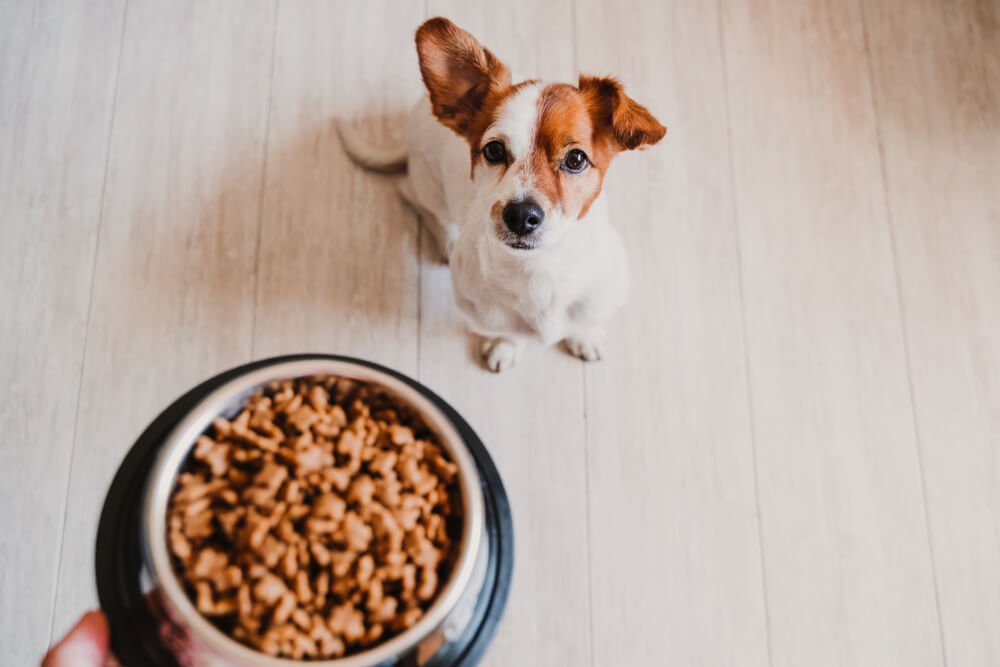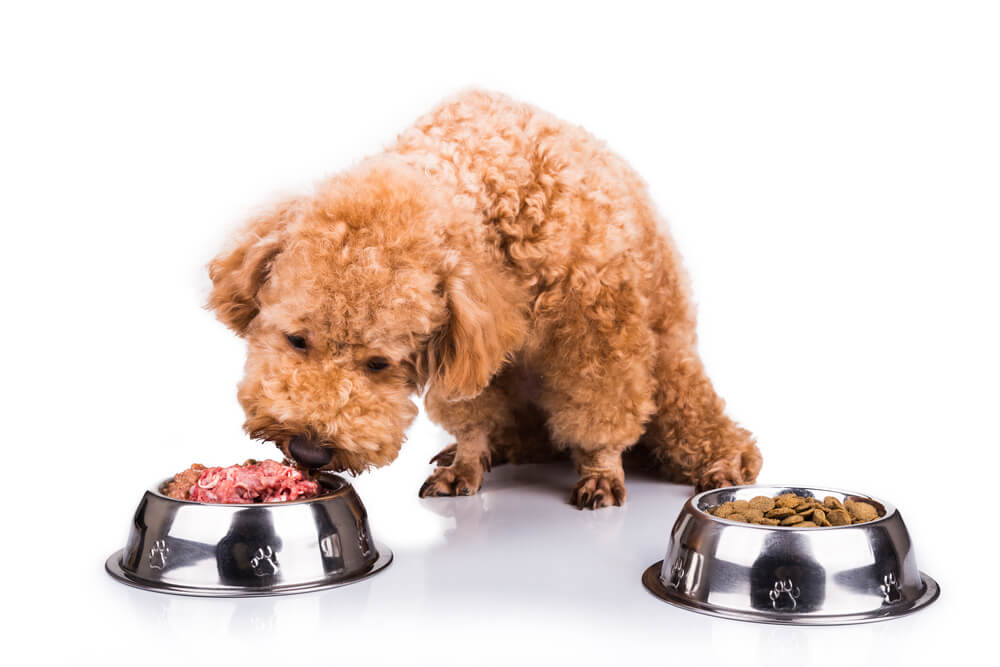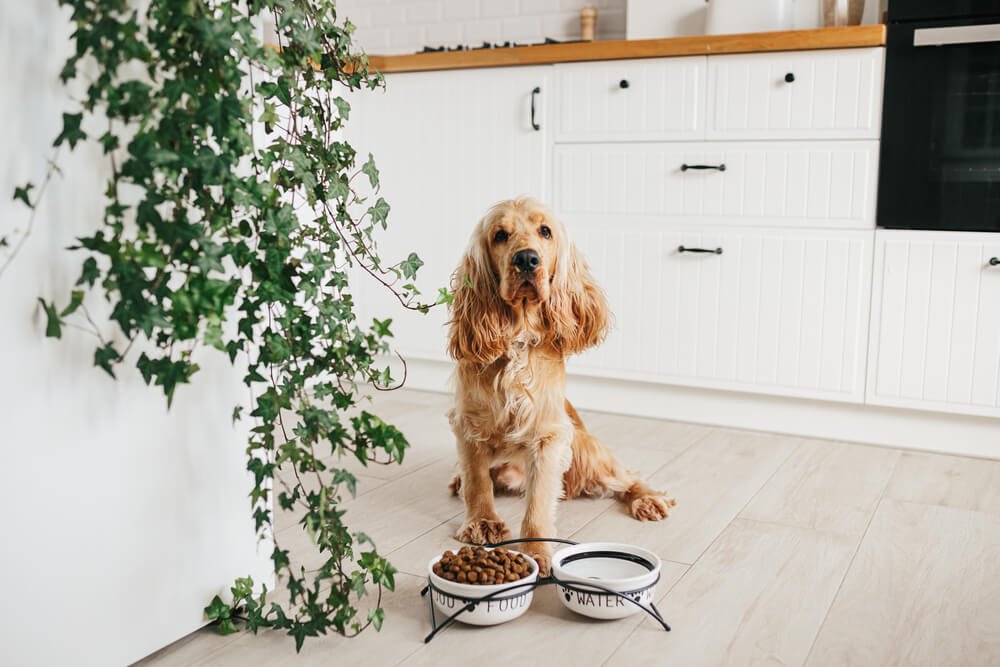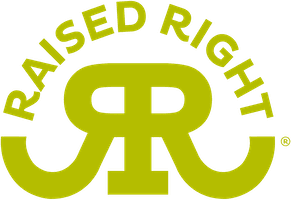
If you want to change your dog’s food, it’s best not to do it too suddenly. Read on to find out how you can prepare to transition your dog food without causing your canine companion an upset stomach or other unpleasant symptoms.
Why might you want to change dog food?
There are lots of reasons why you might want to change your dog’s food. It might be that your dog needs a prescription diet for a medical condition like kidney disease or liver disease. Or perhaps they have allergy issues and would benefit from a limited ingredient diet that doesn’t contain any preservatives or high carb fillers like rice, oats, barley, corn, or wheat. On the other hand, a doggy diet change is sometimes needed just because your dog doesn’t enjoy their food much. If you’re used to trying to coax your dog to eat, or you’re fed up with offering a buffet of different foods that your dog shows no interest in, it might be time for a change. If you’re struggling with a picky pooch and want to choose a new dog food, you can try offering a “home cooked style” dog food that uses human-grade whole food ingredients.
How do you decide how much dog food to feed your dog?
Even if you’ve chosen the perfect dog food, you might still find it difficult to decide how much to feed your dog. The amount of dog food your dog needs will depend on whether they are over or underweight, their age, their weight, and their activity level. Here’s a dog food calculator you can use to calculate how much human grade dog food to feed your four-legged friend.
How to transition dog food

If your dog is sensitive, the negative symptoms of food transitioning could take awhile to get under control.
A gradual transition is key when it comes to changing your dog’s food. If you suddenly offer a bowl of new food out of the blue, your dog could end up with vomiting, diarrhea, bad gas, or belly pain. Especially if your dog is sensitive, these symptoms could take a while to get under control. During the process, if your dog develops symptoms that fail to improve when back on the old diet, you should feed them a bland diet for a few days.
Day 1 to 3
On the first three days of the transition, you should feed your dog 25% of the new food and 75% of their old food. If you notice any symptoms that might indicate a problem, like vomiting or diarrhea, go back to their old diet for a few days until the symptoms settle, and try again after a week or two.
Day 4 to 6
Once your dog has eaten a quarter of the new diet with three-quarters of their old diet for three days without symptoms, you can increase the amount of the new diet. Give your dog 50% of the new diet with 50% of the old diet for another three days. Again, if this half-and-half diet causes your dog any symptoms of being unwell, stop the new diet immediately.
Day 7 to 9
Once your dog is tolerating a half-and-half diet well, increase the amount of the new diet to 75% from day 7, while still providing 25% of the old diet. Keep an eye on them to make sure the new food still isn’t triggering any problems.
Day 10 plus
Once you’ve made it to day 10 you can feed your dog the new diet on its own!
How to transition dog food without a previous food
It’s not a great idea to give your dog new food out of the blue, but if you can’t source their previous food anymore you might think you have no choice. Don’t panic though, if you’re transitioning dog food without old food you can use a bland diet as a substitute for their old food and do the same proportions as described above.
How to transition dog food for puppies
It’s understandable that if you have a puppy, you might be even more concerned about transitioning their food. After all, puppies can be more sensitive and symptoms like vomiting and diarrhea can be more concerning. Thankfully, if you follow the same guidelines above, you can change your puppy’s food without any problems.
What if you want to transition dog food quickly?

It’s important to remember that if you rush the process and cause a stomach upset, you’ll end up having to put them back on their old diet and start again.
Transitioning dog food quickly is never a good idea and is very likely to cause digestive issues. However, if there’s a medical reason why it would be best to transition your dog’s food without delay, you can try reducing the amount of time spent on each stage of the transition. Remember, though, that if you rush the process and cause a stomach upset, you’ll end up having to put them back on their old diet and start again. So, overall, the process will take much longer anyway.
Summary
Changing your dog’s diet might seem daunting, but as long as you do it slowly you can move your dog onto a diet that suits them better.
FAQ
How long should it take to transition dog food?
If you do it carefully and correctly, it should take around 10 days to transition your dog’s food. Of course, if they develop any signs of an upset stomach, you might need to go back a few steps, so it can take a little longer.
How do I transition from one dog food to another?
Patience is key when transitioning from one dog food to another. Try to increase the amount of the new food gradually in 25% increments until you’re feeding just the new food. You should spend around 3 days on each stage before increasing the amount of the new food to reduce the risk of a gut reaction.
How long does diarrhea last in dogs after changing food?
If your dog develops diarrhea while you are changing their food, you should put them onto their old diet immediately. If after 48 hours their symptoms haven’t resolved or improved, you should feed them a bland diet until 48 hours after their last soft motion.
How do you introduce a new food to a dog?
By following the steps above you should be able to safely introduce your chosen dog food without risking causing vomiting, diarrhea, or bad gas. However, if you are struggling and your dog has symptoms of an upset belly that won’t go away, speak to your veterinarian.


